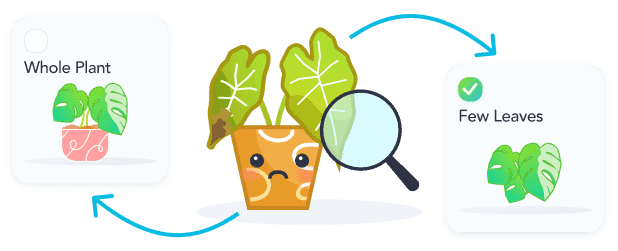Every 14d
Recommended Frequency
1 /2 cup of water
Recommended Amount
The Echeveria Agavoides is a succulent that doesn't require much watering. The best method is to soak the soil and allow it to dry out before watering again. Be mindful to not water the plant directly, as stagnant water ...
Every 365d
Recommended Frequency
Fertilize your Echeveria Agavoides once a year during spring using a slow-release fertilizer.
Direct Sun
Recommended
Direct Sun is the most intense form of light that your plant will receive from indoors as they will be directly exposed to the sun's rays in this spot!
Every 1095d
Recommended Frequency
Repot your Echeveria Agavoides every three years, or once it outgrows its pot.
Echeveria agavoides thrives in temperatures between 60 to 85 degrees Fahrenheit, placing it in a moderate to high temperature preference. It's crucial to maintain this range for optimal growth.
Sandy Soil
Recommended Soil
Peat Soil is an acidic soil that retains a lot of moisture and slows decomposition. Due to such a high moisture retention this mix may require irrigation to help with draining. This soil type is best used when paired wit...
Echeveria agavoides thrives in environments with humidity levels around 40-50%, which falls into the average range. This succulent prefers conditions that are not too moist, aligning well with its natural habitat. Mainta...

Shop Echeveria Agavoides
Questions about Echeveria Agavoides
Echeveria agavoides, commonly known as the Lipstick Echeveria, is a succulent plant native to Mexico. It's renowned for its compact, rosette shape and pointed, green leaves with red edges, resembling an agave. This low-m...

Toxicity of Echeveria Agavoides

Common Pests and Diseases
Root Rot
Overwatering
To address root rot in Echeveria agavoides, first, remove the plant from its pot and trim away any black, mushy roots. Allow the plant to dry for a few days before repotting in fresh, well-draining soil. Ensure the pot has adequate drainage holes. Going forward, water only when the soil is completely dry, and avoid letting the plant sit in water. Consider using a moisture meter to better gauge when watering is necessary.
Leaf Shriveling
Underwatering
To address leaf shriveling due to underwatering in Echeveria agavoides, gradually increase watering frequency, ensuring the soil is allowed to dry out partially between waterings. Use a well-draining soil mix to prevent waterlogging. It's crucial to monitor the plant's response to changes in watering, adjusting as necessary. During hotter months, Echeveria agavoides may require more frequent watering. Always check the soil moisture level before watering to avoid overwatering.
Mealybug Infestation
Pseudococcidae family
To combat mealybugs, start by isolating the affected plant to prevent spread. Use a cotton swab dipped in rubbing alcohol to dab directly onto the pests, effectively killing them without harming the plant. For severe infestations, applying a diluted solution of neem oil or insecticidal soap directly to the plant every few days until the pests are eradicated can be effective. Ensure to treat the plant in the evening to avoid sunburn. Regularly inspect your plants and maintain proper hygiene to prevent future outbreaks.
Echeveria Agavoides Edema
Caused by irregular watering practices leading to the plant absorbing water faster than it can be transpired, resulting in blisters or corky spots on leaves.
To manage edema in Echeveria Agavoides, ensure a consistent watering schedule that allows the soil to dry out slightly between waterings. Improve air circulation around the plant to enhance transpiration and evaporation. If possible, reduce humidity levels around the plant. In severe cases, affected leaves may need to be removed to prevent the spread of damage.

Related Plants
Other Articles:
Top 10 Most Popular Roses
Mar 22, 2022
How to Care for China Roses
Mar 11, 2022
How to Care for Chinese Money Plants
May 15, 2020
How to Grow and Care for A Bird of Paradise
Apr 26, 2020
Top 10 Plants To Grow In A Terrarium
May 31, 2022
How to Grow and Care for Lucky Bamboo
Mar 29, 2022
How to Grow and Care for Corn Plants
Mar 29, 2022
How to Care for Madagascar Dragon Trees
Mar 21, 2022



